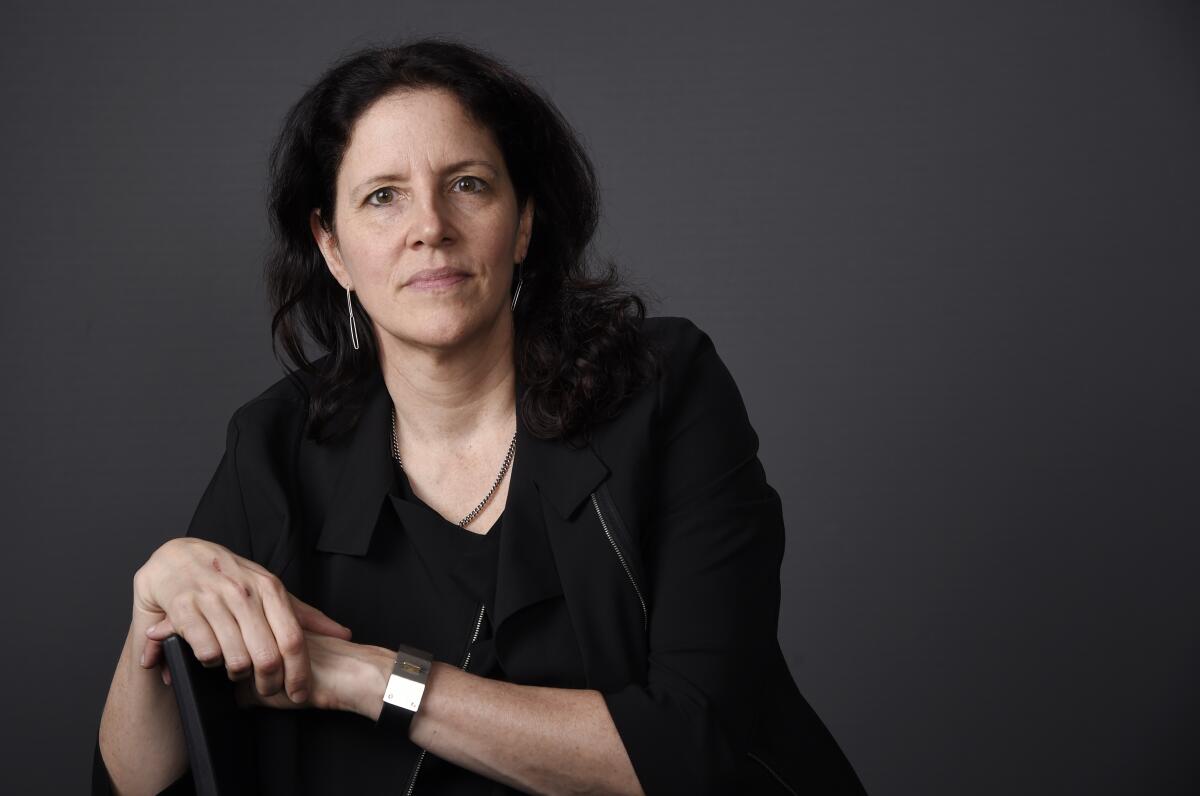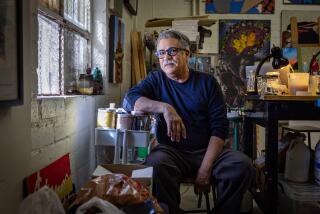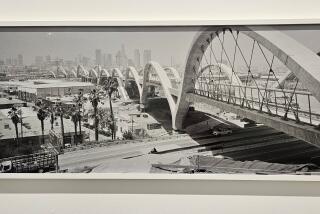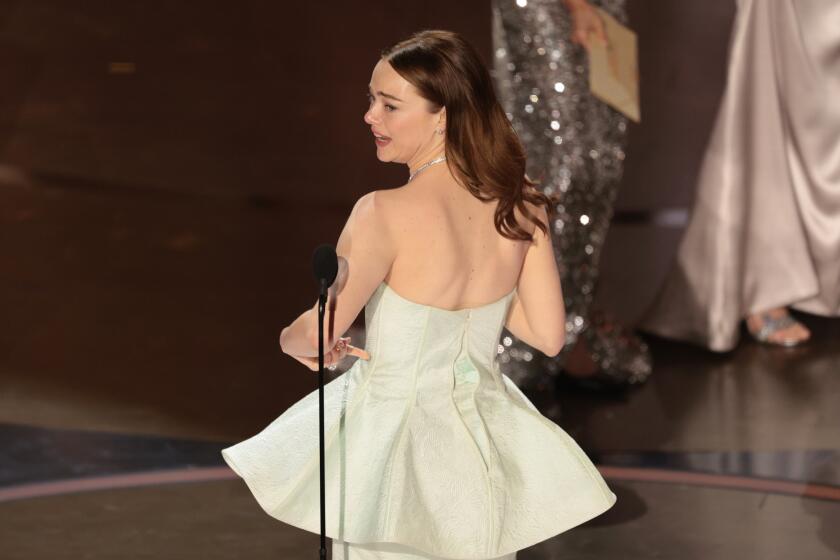‘All the Beauty and the Bloodshed’ taps the intersection of art, addiction, activism

So many moving parts mesh so seamlessly in “All the Beauty and the Bloodshed,” Laura Poitras’ galvanizing portrait of photographer Nan Goldin, that it feels like several movies blended into one. Adopting her collaborative subject’s unflinching yet also righteously energized spirit, the film pivots at the intersection of art, addiction and activism, reflecting on Goldin’s pioneering work and its often traumatic sources, as it also tracks the artist’s fierce campaign against the Sackler family — billionaire museum patrons who may have played a role in the decades-long opioid crisis.
“I’m a little bit nervous about the genre of the biopic, right?” confessed Poitras, who has been both celebrated and surveilled for a series of documentaries that confront the realities of the post-9/11 world with a news-making urgency. Her 2014 film “Citizenfour,” about whistleblower Edward Snowden, won the documentary feature Oscar. Yet, Goldin’s life story shared plenty with the filmmaker’s other work, in which individuals take terrific risks to confront forces that tower over them. As Poitras frames it: “A renowned artist with enormous power in the art world decides to leverage her power to go after” the Sackler family, owners of Purdue Pharma, maker of OxyContin.
The documentary, which won the Golden Lion for best film at this year’s Venice International Film Festival, moves back and forth in time. Its chronicle of Goldin’s rise through New York’s underground art scene of the 1970s and ‘80s, driven by her autobiographical work-in-progress “The Ballad of Sexual Dependency,” digs further into trauma from the artist’s childhood and the tragic loss of her older sister. More current verite sequences follow the artist, who barely survived an OxyContin addiction, leading her activist group P.A.I.N. (Prescription Addiction Intervention Now) in a series of protests that persuaded museums worldwide to end their associations with the Sackler family.

Flashbacks to the AIDS crisis, which decimated the downtown New York bohemia that nurtured Goldin, and to the confrontational work of the activist group ACT UP, serve as a powerful parallel to the photographer’s current mission. The so-called “culture wars” of the 1980s are also evoked, so strangely timely in today’s polarized political landscape.
“On paper that’s OK — but it takes time,” Poitras said of the film’s structure. The filmmaker and her editors, Joe Bini and Amy Foote, took some cues from Lynne Ramsay’s 2011 drama “We Need to Talk About Kevin,” which Bini also edited. “Joe had some really strong ideas about how to build this interweave between the past and the present.”
The film prompts a question, Foote said. “What is it about this woman that is able to do this and relentlessly go after people and take such great risks? By juxtaposing her past, her inner story is a window into answering that question,” the editor added. “There’s so much silence in her back story, going in and out of that creates an interesting dynamic. The [activist] story is so loud and noisy and messy and then you’re just in silence.”
The core of the film is Goldin’s own voice, which Poitras recorded in a series of conversations and which overlays different time frames with piercing and eloquent candor. “These interviews with Nan are just really powerful and emotional,” Poitras said. “And you felt that immediately the first time we sat down and talked that there’s an unfiltered-ness and rawness [and] the way that it worked with her images was really powerful.” During these sessions, Poitras left the camera off. “It would have never been possible to get that kind of intimacy if there had been a crew in the room,” she said. “She speaks so bravely about her life and that was only possible because we were alone.”
The sense of urgency that pervades Poitras’ films grows throughout “All the Beauty,” more so with the unexpected arrival of a mysterious figure who begins to shadow Goldin’s activist group. “That’s the playbook, right?” Poitras said. “It’s pure intimidation.” The inclusion of the mystery man introduces an anxious vibe familiar in her films. The filmmaker managed to identify the man, who also was spoken with, but decided not to focus more extensively on his presence. “He was just a working-class guy who didn’t know who hired him,” she said. “He didn’t know who he was following.”
The drama propels the story toward its emotional climax, as Goldin’s once seemingly quixotic campaign shakes the museum world to its core. “It took a long time,” Poitras said. “But then it happened. It’s a hopeful story in that sense. The direct action that a small group of people meeting in someone’s living room can take on a billionaire family.”
More to Read
From the Oscars to the Emmys.
Get the Envelope newsletter for exclusive awards season coverage, behind-the-scenes stories from the Envelope podcast and columnist Glenn Whipp’s must-read analysis.
You may occasionally receive promotional content from the Los Angeles Times.






